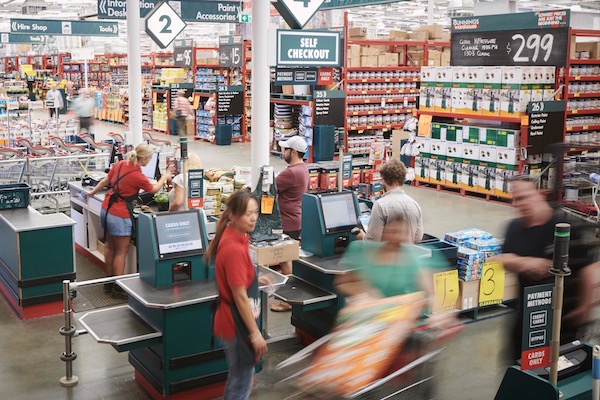Published on the 20/02/2024 | Written by Heather Wright

‘Money well spent’ in strengthening overall group…
Wesfarmers says its larger businesses are benefiting from the investments made to digitise operations, with some big investment in its OneDigital business proving ‘money well spent’ and strengthening the overall group.
The company, whose brands include Kmart, Bunnings, OfficeWorks and Catch.com.au, alongside pharmacies, an industrial chemical business and a lithium mine (and in case you’re interested, spoduene ores are used in the production of lithium), posted a better-than-expected half-year profit after tax of AU$1.4 billion.
“They spend more, they shop more frequently and they’re cross shopping.”
The company’s OneDigital data and digital division, launched in 2022, incorporates Wesfarmers’ brands, including Kmart, and Bunnings, through the OnePass subscription program, and includes includes the Catch.com.au marketplace and an Advanced Analytics Centre.
While the Catch marketplace reduced losses during the half-year, it was the OnePass subsciption program – where members pay upwards of AU$4/month for benefits including free deliveries, extra FlyBuys and express click and collect – that was heralded by the company at its recent results briefing.
Last year OneDigital signed a new five-year deal with Amazon Web Services to support its developing data and digital platform. It was that work with AWS which Wesfarmers has previously attributed to the launch of OnePass in months, rather than years.
OnePass was built using AWS native services, with Sheffield saying last year that the AWS services enabled it to quickly build and run modern applications, without having to worry about managing infrastructure.
It is running Amazon Managed Streaming for Apache Kafka for the core of the program, with AWS Fargate cluster, a serverless containerised environment within Amazon Elastic Container Service, also used.
Wesfarmers managing director Rob Scott says OnePass, into which the company invested $39 million during the period, is bolstering sales across Wesfarmer brands.
Its members are high-frequency, higher-value customers compared to non-members, shopping both in-store and online.
“Importantly, we see the OnePass program supporting customer acquisition and retention for the divisions and incremental sales as members increased their spending after they joined the program,” Scott says.
Data also shows that customers joining OnePass increase their spend on Catch, he says.
That’s good news for Catch, which despite reduced losses – the $37 million was down from $48 million for the same period last year – still saw a 29 percent drop in sales.
Nicole Sheffield, OneDigital managing director, says OnePass members are ‘incredibly valuable’.
“They spend more. They shop more frequently and they’re cross shopping more than non-members.”
That’s translating to member total spend of more than 2.5 times those on non-members, she says.
“And the early signs for OnePass is that they’re actually cross shopping, which is a big objective of how we actually measure success of the program.”
The company says it had more than 2.2 million digital transactions a month, up from 0.5 million/month in FY19, with digital interactions hitting 210+ million a month and says the digitisation of the business is helping drive deeper customer connections and operating efficiency.
But OneDigital logged a loss of $70 million for the period – and that’s excluding the Catch losses – highlighting the issues many businesses are facing in getting early returns on their data and digital investments.
But Scott says
Scott acknowledges the investment Wesfarmers has made in OneDigital is ‘fairly significant’.
“It’s a lot of money. But in the scheme of our group, it’s a fairly modest amount. When you look around the world at what other large retailers are spending in this area, I think it’s a fairly modest investment.
“We are very focused on are we getting the return? Are we getting the benefit to justify the level of investment? And at the moment, I feel that there is really good evidence to suggest that the money is being well spent and it is strengthening our group at the moment.”
Developing data and digital assets was also a focus at Kmart Group in its attempts to grow its share of customer wallets.
RFID capability was extended in Kmart stores to provide more accurate inventory information, withethe sourcing and supply chain undergoing ongoing digitisation to further reduce lead times, improve availability and reduce costs. Both the Kmart and Target online platforms were enhanced to improve delivery efficiency and better customer experience.



























